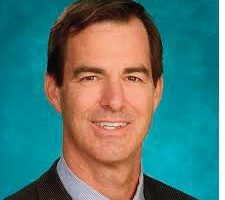 The top-down method of organizing a political campaign is being turned into a relic by Barack Obama’s bottom-up strategy.
The top-down method of organizing a political campaign is being turned into a relic by Barack Obama’s bottom-up strategy.
Bill and Hillary Clinton have been smarting primarily because their assumption, based on past successes, that high-roller contributors and insiders – a top-down campaign – would guarantee them the White House again, has failed dramatically.
Early on, while the Clintons were busy ignoring him, Obama quietly merged Internet technology with grassroots organizing across America. In his first book, Dreams from My Father, Obama details his three years experience as a budding political scientist turned community organizer in Chicago’s inner-city before going to Harvard Law School.
Back then, in 1983, Obama would say, “Change won’t come from the top . . . Change will come from a mobilized grassroots.”
David Axelrod, Obama’s chief campaign strategist, told Rolling Stone magazine that the bottom-up strategy of the campaign is all Barack Obama.
“When we started this race, Barack told us that he wanted the campaign to be a vehicle for involving people and giving them a stake in the kind of organizing he believed in,” Axelrod said in the March 20 issue of the magazine.
As Obama officially announced his candidacy during Black History Month last year, he also set up a website and held big rallies in a few key cities. In addition to getting large numbers of people to each donate small amounts of money to the campaign, Obama strategists got supporters’ names, telephone numbers, e-mail addresses and ZIP codes.
People were, and still are, encouraged to get involved beyond attending a rally and giving money as the campaign is actually a movement to change the American political paradigm.
As a result, people sign up to canvass, make phone calls, construct and place yard signs, and take people to the polls.
The usual response of political campaigns regarding the youth vote is to place some perfunctory young person who is close to the campaign hierarchy as coordinator when the general election starts, and without any staff.
Obama and his people did not forget the youth-oriented Rock the Vote campaign in 2004 and quickly got that effort’s political leader in place as youth-vote director. Soon, Obama had youth-vote staff in every state, and two national deputy directors.
Barack Obama won Iowa, and significant numbers of young people under 30 caucused for him. The campaign’s strategy of building a new coalition of voters was working. Since Iowa, the youth vote for Obama has exploded across America.
As a response to an e-mail asking supporters across the country to spend a day precinct-walking for Obama, Rolling Stone magazine reports that, “On a Saturday in early June – six months before anyone would cast a ballot or attend a caucus – more than 10,000 Obama supporters hit the pavement in all fifty states to persuade their neighbors to back Barack.”
This extraordinary presidential political campaign went even further in grassroots organizing by providing online social networking with the creation of a site called MyBo. There, supporters can network and organize into whatever groups they desire to further the movement for Obama.
Groups like Black Republicans for Obama, various states or professionals for Obama, and so on, are possible with this new hi-tech toolbox. According to Rolling Stone, “Today, the network claims more than half a million members and more than 8,000 affinity groups.”
Al_Calloway@Verizon.net












No Comment